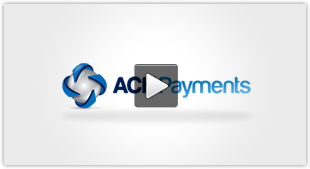ACH Payment Processing Solutions have become a cornerstone of financial transactions in the digital age. They offer a reliable and cost-effective means for businesses and individuals to transfer funds electronically. At the core of ACH payment processing is the efficient, secure, and systematic movement of money between bank accounts, which is facilitated by networks that connect financial institutions across the nation.

ACH transactions have gained tremendous popularity due to their lower processing fees compared to credit card transactions, making them an attractive option for both high and low-value payments. The system can handle various types of payments, including direct deposit payroll, recurring bill payments, and one-time transfers. Businesses benefit from ACH payment processing by streamlining their operations and reducing the reliance on paper checks, which are more resource-intensive and time-consuming.
As the financial industry continues to evolve, ACH Payment Processing Solutions are incorporating advanced technologies to further enhance security and expedite transaction speeds. This progression is paramount in meeting the growing demand for swift and secure financial transactions in an increasingly digital economy. Companies that integrate ACH payment options are better positioned to manage cash flow and improve customer satisfaction by offering a broader range of payment alternatives.
Understanding ACH Payment Processing

ACH payment processing is a reliable and cost-effective means of transferring funds electronically between bank accounts. This section outlines the mechanics of ACH payments, their comparison with other money transfer options, and the advantages they offer to businesses and customers.
What Are ACH Payments?
ACH payments are electronic payments made through the Automated Clearing House (ACH) Network, operated by the National Automated Clearing House Association (NACHA). These payments are a way for consumers and businesses to transfer money without the use of paper checks, credit card networks, wire transfers, or cash. Transactions can be either an ACH credit, pushing funds into an account, or an ACH debit, pulling funds out of an account.
ACH Processing Vs. Credit Card and Wire Transfers
ACH processing is distinct from credit card transactions and wire transfers. Unlike credit card payments, which process almost immediately but typically incur higher fees, ACH transfers may take one to two business days through the Next-Day ACH service or can even be settled on the same day with Same-Day ACH services. In comparison to wire transfers, which are faster but also more expensive, ACH is seen as a lower-cost alternative for non-urgent transactions.
| Payment Method | Speed | Cost | Best Used For |
|---|---|---|---|
| ACH Transfers | 1-2 days | Low | Bulk, Non-urgent |
| Credit Card | Immediate | Higher | Consumer Purchases |
| Wire Transfers | Immediate | Highest | Urgent, High-value |
Benefits of ACH for Businesses and Customers
Businesses and customers benefit from ACH payment processing in multiple ways:
- For Businesses:
- Lower processing fees compared to credit cards and wire transfers.
- Ability to set up recurring payments, streamlining revenue collection.
- Enhanced capability to predict cash flow due to the scheduled nature of ACH.
- For Customers:
- Offers convenience through direct deposits, eliminating the need to deposit checks.
- Provides control over payments with the option to authorize ACH debits for bills.
- Increases security with electronic payments, reducing the risk of lost or stolen checks.
ACH Payment Processing Solutions enable the efficient management of these benefits, leveraging the stability and security afforded by the ACH network and ACH operators such as the Federal Reserve to handle a significant volume of transactions, including ACH credits for payroll and ACH debits for utility bills, seamlessly for both senders and receivers.
Implementing ACH Processing Solutions

When businesses decide to adopt ACH processing solutions, they should focus on selecting a competent ACH processor, ensuring seamless integration of payment gateways, and understanding the intricacies of processing fees and transaction limits.
Choosing the Right ACH Processor
Businesses need to evaluate ACH processors based on their reliability, security, and ease of integration. Processing solutions like Stripe, Square, and National Processing offer robust services tailored to different business needs. When selecting an ACH processor, it is essential to consider the processor’s affiliation with the Originating Depository Financial Institution (ODFI) and The Clearing House, which facilitate the direct payment process. Businesses should also assess the customer support offered by the processor, prioritizing those with 24/7 customer support.
- Features to consider:
- Security and fraud prevention measures
- Compatibility with existing systems
- API and developer tools
- Support from Merchant Services Providers
- ECheck processing capabilities
Integrating ACH Payment Gateways
The integration of the ACH payment gateway into the business’s payment system should be smooth, with minimal disruption to operations. A provider like PaymentCloud offers APIs that facilitate easy inclusion of ACH merchant services into a business’s existing infrastructure. Developers may utilize tools provided by services such as Plaid to link bank data with ACH for an enhanced user experience. For businesses processing high volumes of transactions, selecting a gateway that can handle increased traffic is paramount.
- Steps for integration:
- Install the APIs or tools provided by the gateway.
- Configure the settings to match the business’s requirements.
- Conduct thorough testing to ensure the gateway functions correctly.
Navigating ACH Processing Fees and Transaction Limits
Understanding the fee structure, including monthly fees, processing fees, and transaction fees is critical. Providers like Helcim and PayPal offer transparent pricing models, allowing businesses to forecast their expenses accurately. High-risk processors may impose higher fees due to the increased risk associated with the transactions they handle. Additionally, businesses must be aware of the limit on ACH transfers which can vary by provider and may affect operational cash flow.
- Fee components to be aware of:
- Monthly fees: Fixed charges associated with maintaining the processing account.
- Processing fees: Costs incurred per transaction.
- Transaction limits: Maximum amount that can be processed per transaction or within a certain time frame.








